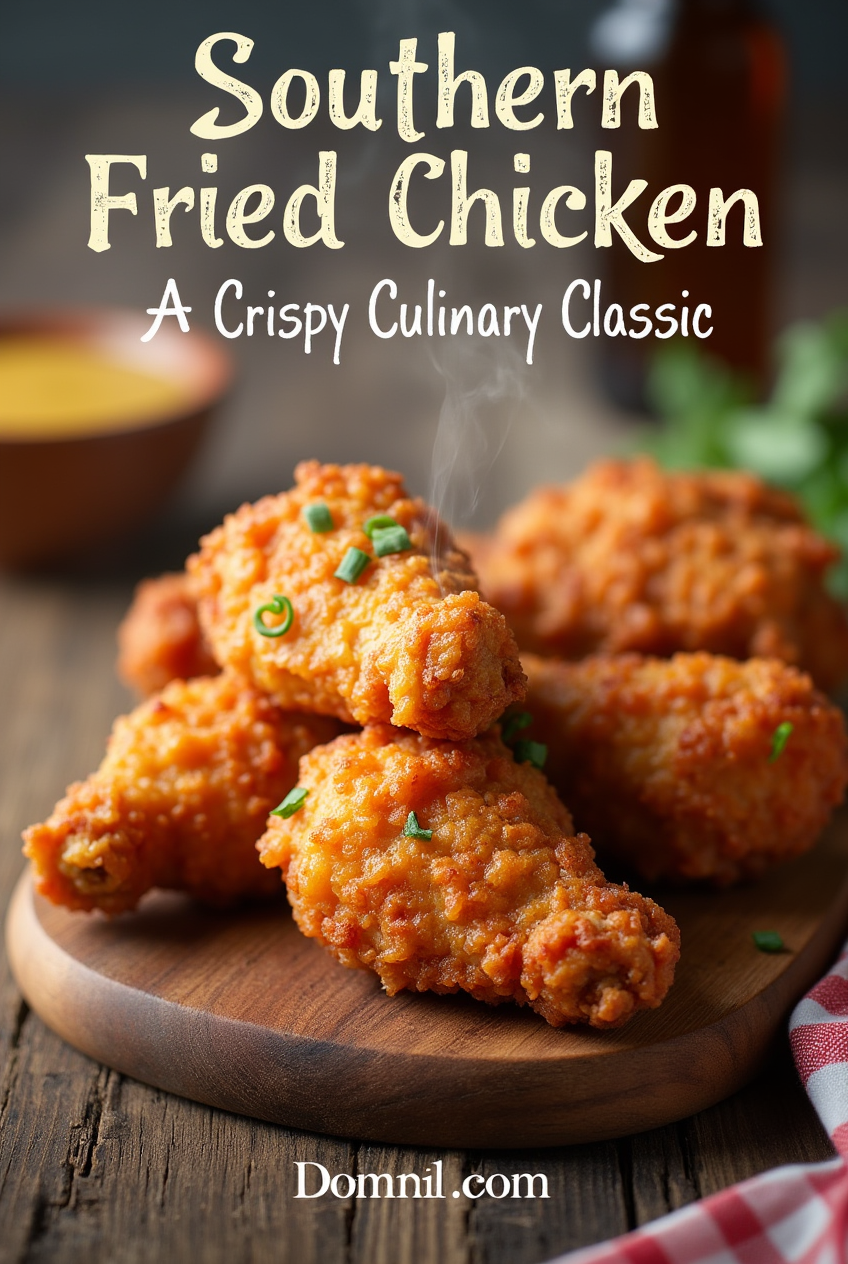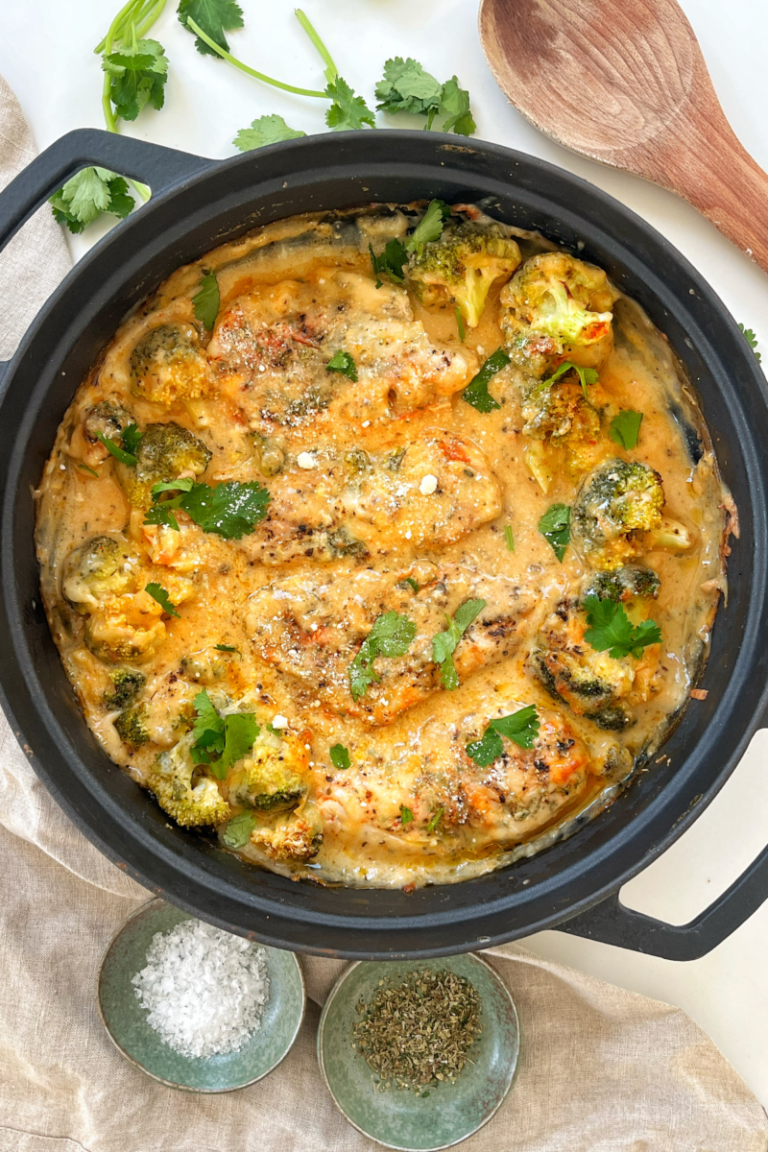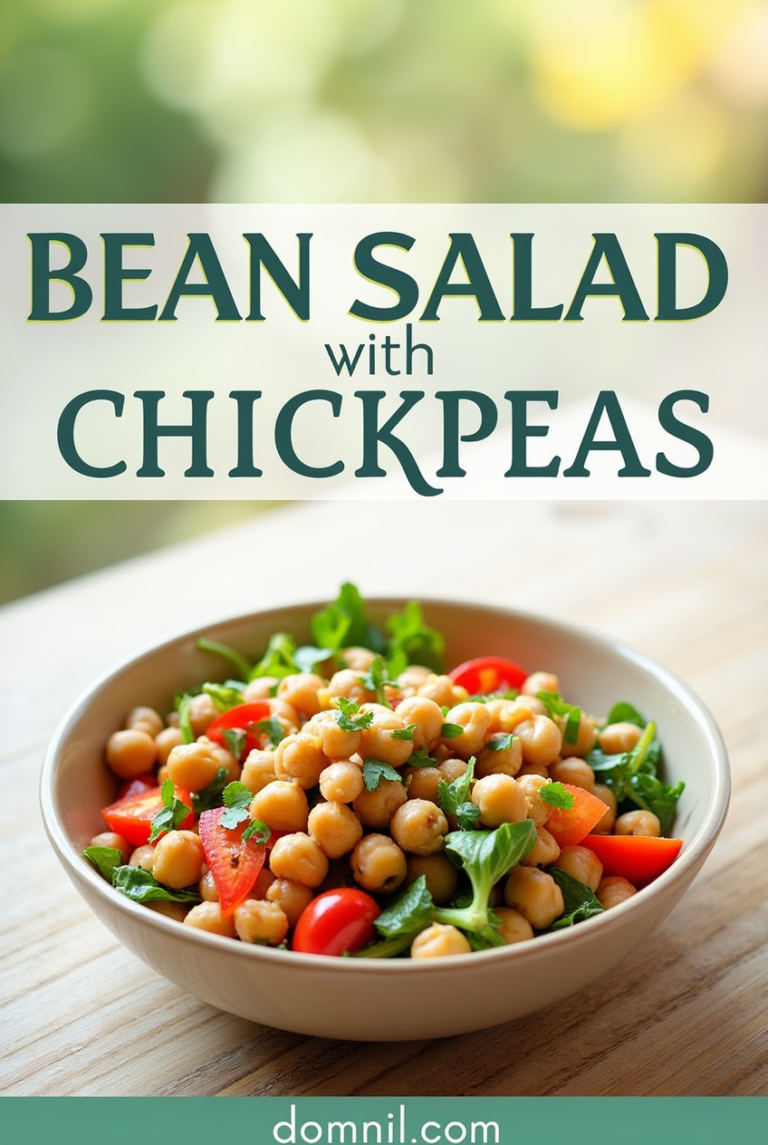Southern Fried Chicken: America’s Crunchy, Juicy Comfort Food Obsession
Introduction to Southern Fried Chicken
The Roots of Southern Fried Chicken
Southern fried chicken is more than just a dish—it’s a rich cultural tradition with a history that dates back hundreds of years. Originating in the American South, this beloved comfort food was born from a blend of culinary practices brought over by Scottish immigrants and African American cooks. The Scots introduced the idea of frying chicken without seasoning, while enslaved Africans enhanced the dish with bold spices and seasoning techniques, creating the flavorful, crispy masterpiece we know today.
Southern fried chicken gained traction in rural communities where ingredients were accessible and affordable. Chickens were easy to raise, and frying was a fast way to cook meals for large families. As the recipe spread across the country, it evolved into a symbol of hospitality and family gatherings. Fried chicken quickly became a staple at picnics, Sunday dinners, church potlucks, and festive celebrations throughout the South.
Its reputation only grew with the advent of Southern soul food, where fried chicken sits proudly at the center of the table. Today, whether you’re eating it in a family kitchen, a bustling restaurant, or a trendy food truck, Southern fried chicken still delivers that timeless satisfaction of a crunchy crust and juicy meat—a flavor that instantly feels like home.
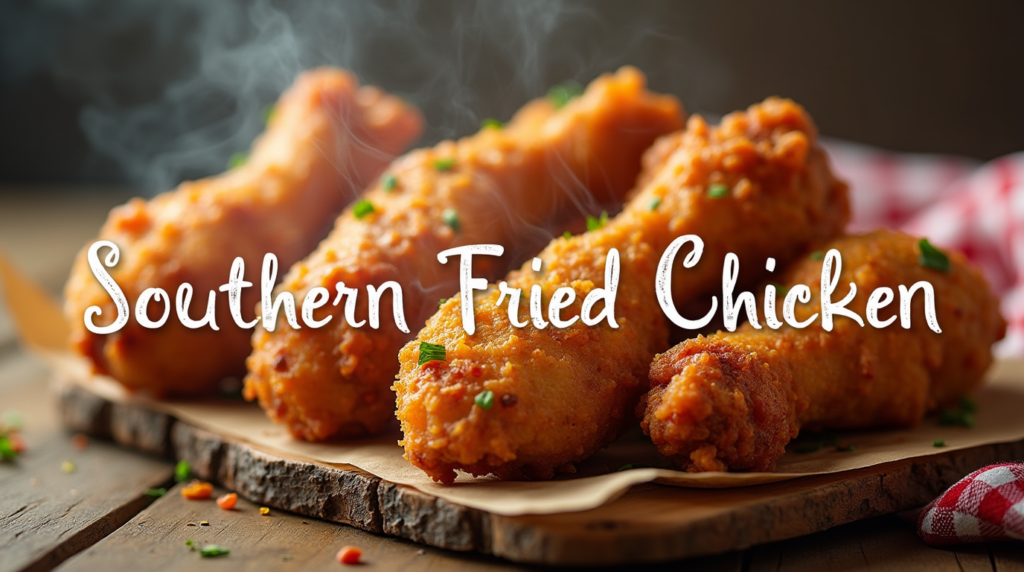
Table of Contents
Why It’s a Staple of American Comfort Food
Why do so many people love Southern fried chicken? The answer lies in its irresistible combo of texture and taste. That golden-brown crust offers a loud crunch with each bite, contrasting beautifully with the succulent, flavorful meat underneath. It’s satisfying, indulgent, and incredibly nostalgic. One whiff of that seasoned, sizzling chicken in the fryer is enough to transport anyone back to their grandma’s kitchen.
Moreover, it’s one of those rare dishes that crosses social and economic lines. From roadside diners to five-star restaurants, Southern fried chicken can be enjoyed by all. It offers a universal appeal, a culinary hug that’s as comforting as a warm blanket on a chilly night.
Ingredients That Define Southern Fried Chicken
Chicken Cuts – Choosing the Right Piece
When it comes to frying chicken Southern style, the cut you choose makes all the difference. Traditional recipes often call for a whole chicken, cut into pieces—this includes breasts, thighs, legs, and wings. Each cut brings something unique to the table. Thighs and legs are more forgiving and flavorful, packed with juicy dark meat that doesn’t dry out easily. Breasts offer a leaner option but need careful cooking to avoid becoming too dry. Wings, with their perfect bite-sized nature, are often the crowd favorite for parties and get-togethers.
For that authentic Southern flair, many purists insist on bone-in, skin-on pieces. The bone helps retain moisture and flavor, while the skin crisps up beautifully when fried. Boneless options are great for convenience or sandwiches, but they don’t quite replicate the full Southern experience.
It’s also worth noting that freshness matters. Choose organic or free-range chicken when possible for better texture and taste. And don’t be afraid to trim excess fat or cartilage before marinating—the cleaner the piece, the better the result.
The Magic of Buttermilk Marinade
Buttermilk is the not-so-secret weapon in Southern fried chicken. Soaking the chicken in buttermilk tenderizes the meat while also adding a subtle tangy flavor that cuts through the richness of the fried crust. The lactic acid in the buttermilk gently breaks down protein fibers, ensuring every bite is tender and juicy.
A proper buttermilk marinade also acts like a flavor sponge. It’s the perfect vehicle for spices like garlic powder, onion powder, paprika, cayenne, and even a splash of hot sauce if you’re craving a kick. Ideally, let the chicken marinate overnight in the fridge—at the very least, give it four hours to soak up those flavors.
Once removed from the marinade, don’t rinse the chicken. The slightly sticky surface helps the flour coating cling better, leading to a crispier, crunchier crust. That’s the texture sweet spot: juicy inside, crispy outside.
Seasoning Secrets: Southern Spices You Need
Southern fried chicken isn’t just about the fry—it’s about the flavor, and that starts with the right seasoning. Seasoning should be layered throughout every stage: in the marinade, in the flour coating, and sometimes even after frying. A good spice blend transforms ordinary fried chicken into an unforgettable culinary experience.
The base usually starts with salt, black pepper, garlic powder, and onion powder. But true Southern-style chicken leans on more flavorful characters: paprika (for color and a mild kick), cayenne (for heat), mustard powder (for tang), thyme, oregano, and even a bit of brown sugar for a hint of sweetness.
For the flour dredge, season generously—don’t just toss your chicken in plain white flour. Add the same spice blend used in the marinade, and then some. This creates a well-rounded flavor profile that doesn’t fade after frying.
Some cooks add cornstarch to the flour mix to boost crispiness. Others use hot sauce or mustard in the buttermilk for an extra punch. The beauty of Southern fried chicken is that it’s as versatile as it is classic—you can adjust the heat, sweetness, or herbs to suit your taste buds, all while keeping that essential Southern soul intact.
The Art of Frying: Techniques and Tools
Cast Iron Skillet vs. Deep Fryer
When it comes to Southern fried chicken, the equipment you use can be just as important as the ingredients. The traditional method? A well-seasoned cast iron skillet. Cast iron holds heat incredibly well and distributes it evenly, which is crucial when you’re trying to achieve that beautiful golden crust. There’s also a nostalgic charm to cooking in a cast iron skillet—many Southern families pass them down through generations.
That said, modern home cooks might opt for a deep fryer for convenience. Deep fryers allow you to control the temperature more precisely, reducing the chance of burning the chicken or cooking it unevenly. They also let you fry more pieces at once, which is handy when you’re feeding a crowd.
However, if you want to stay true to Southern roots, cast iron is king. The skillet method may take a bit more attention and effort, but the flavor it brings is unmatched. The slightly shallower oil in a skillet also promotes better crust development, which is what Southern fried chicken is all about.
Oil Selection: What Works Best?
The oil you use plays a big role in both the flavor and texture of your fried chicken. You need something with a high smoke point to prevent burning and an oil that doesn’t overpower the spices. The go-to options for Southern fried chicken include:
- Peanut oil – A favorite in the South, thanks to its high smoke point and neutral flavor.
- Canola oil – Widely available and affordable, with a mild taste.
- Vegetable oil – Also common and easy to use, though some say it lacks a bit of flavor.
Avoid oils with strong flavors like olive oil or coconut oil—they can clash with the spice blend. Another pro tip: don’t overcrowd the pan. Frying too many pieces at once can lower the oil temperature, making your chicken soggy instead of crispy.
And once you’re done frying? Don’t toss the oil immediately. Let it cool, strain out any leftover bits, and store it for another round of frying if it hasn’t gone rancid.
Temperature Matters: Perfecting the Fry
Getting the oil temperature right is the secret to golden, crispy, not-too-greasy chicken. Aim for a steady temperature between 325°F and 350°F (163°C–177°C). If the oil’s too hot, the outside burns before the inside is fully cooked. Too cool, and the chicken absorbs too much oil, resulting in a greasy, limp crust.
Use a thermometer for precision, especially if you’re using a deep fryer or Dutch oven. If you don’t have one, you can drop a bit of flour into the oil. If it sizzles and floats to the top, you’re good to go.
Once the chicken hits the oil, resist the urge to move it too much. Let it develop that gorgeous crust. Flip only once, midway through cooking. Cooking time will vary based on the size and cut of the chicken, but generally, each piece should fry for about 12–15 minutes, turning once for even browning.
After frying, drain the chicken on a wire rack over a baking sheet instead of paper towels. This keeps the crust crisp and prevents steam from making it soggy.
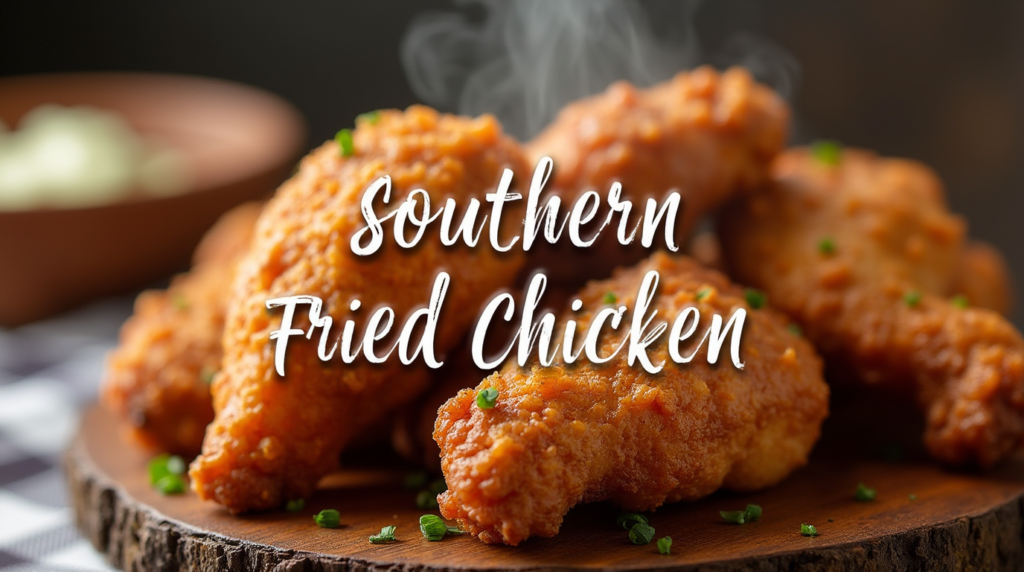
Step-by-Step Southern Fried Chicken Recipe
Preparation and Marination Process
Ready to dive into cooking? Here’s the tried-and-true prep routine to get your chicken tender, juicy, and full of flavor.
Step 1: Choose your chicken. Go for bone-in, skin-on pieces for the most authentic Southern experience. Wash and pat dry.
Step 2: Make the marinade. In a large bowl, combine:
- 2 cups buttermilk
- 1 tablespoon hot sauce
- 1 teaspoon garlic powder
- 1 teaspoon onion powder
- 1/2 teaspoon paprika
- 1/2 teaspoon salt
- 1/4 teaspoon cayenne pepper (optional for heat)
Step 3: Marinate. Submerge the chicken in the buttermilk mixture. Cover and refrigerate for at least 4 hours, ideally overnight. The longer it soaks, the more flavorful it becomes.
This step isn’t just about taste—it ensures tenderness too. The acidity in buttermilk breaks down proteins in the chicken, so it’s moist and flavorful even after frying.
Coating the Chicken: Flour, Cornstarch, and Beyond
Once your chicken has marinated, it’s time for the crispy coating.
Step 1: Prepare your dredge. In a separate bowl, mix:
- 2 cups all-purpose flour
- 1/4 cup cornstarch (for extra crunch)
- 1 teaspoon salt
- 1 teaspoon black pepper
- 1/2 teaspoon paprika
- 1/2 teaspoon garlic powder
- 1/4 teaspoon cayenne pepper (optional)
Step 2: Dredge the chicken. Remove each piece from the marinade, letting excess drip off. Dredge in the flour mixture, pressing it in to ensure the crust sticks well.
Pro tip: For an extra thick crust, double dredge—dip the flour-coated chicken back into the buttermilk, then dredge in flour again.
Step 3: Let it rest. Place the coated chicken on a rack for about 15–20 minutes. This allows the coating to adhere better and prevents it from falling off during frying.
Frying It Right: Timing and Turning
Now for the most exciting part—frying!
Step 1: Heat your oil to 350°F (177°C) in a cast iron skillet or deep fryer.
Step 2: Carefully add chicken pieces, skin side down first. Don’t overcrowd the pan—work in batches if needed.
Step 3: Fry each piece for 12–15 minutes, turning halfway through. Use a thermometer to ensure the internal temp reaches 165°F (74°C).
Step 4: Drain fried chicken on a wire rack. Sprinkle lightly with a pinch of salt while still hot for added flavor.
Boom—golden, crispy, Southern fried chicken perfection. Serve it hot with your favorite sides or let it cool slightly to enjoy picnic-style.

Serving Suggestions for the Ultimate Meal
Best Southern Sides to Serve
You’ve got your crispy, golden Southern fried chicken—now let’s talk sides. Because in the South, the accompaniments are almost as important as the main event. Think hearty, flavorful, comforting dishes that round out your plate and make every bite more satisfying.
Here are some of the most iconic sides to serve with Southern fried chicken:
- Buttermilk Biscuits: Fluffy, buttery, and made for sopping up any leftover juices or gravy. Bonus points if they’re fresh out of the oven.
- Mashed Potatoes and Gravy: Creamy potatoes topped with rich, peppery chicken gravy make for a classic Southern pairing.
- Collard Greens: Slow-simmered with smoked ham hock or bacon, these leafy greens add a touch of Southern soul.
- Macaroni and Cheese: Gooey, cheesy, and baked until golden on top, this dish adds a luscious contrast to crispy chicken.
- Cornbread: Sweet or savory, cornbread is a rustic companion that fits right into the Southern table spread.
- Coleslaw: The cool, crunchy tang of slaw cuts through the richness of the fried chicken beautifully.
- Fried Green Tomatoes: Slightly tart and perfectly crispy, these are a Southern delicacy that complements fried chicken with ease.
Mix and match a few of these to create the ultimate comfort food plate. The key is balance—pair the heavy with the light, the creamy with the crunchy, and always serve it all with a smile.
Dipping Sauces and Gravy Options
While Southern fried chicken is packed with flavor all on its own, adding a dipping sauce or gravy can elevate your meal to a whole new level. And let’s be real—everyone loves a good dip.
Here are some sauces that pair beautifully with Southern fried chicken:
- Classic Chicken Gravy: Made from pan drippings, flour, and milk, this smooth, peppery gravy is an old-school favorite.
- Honey Butter: Sweet, creamy, and perfect on biscuits and chicken.
- Hot Sauce: In the South, a bottle of hot sauce is always within arm’s reach. Use sparingly—or liberally—for a kick.
- White BBQ Sauce: An Alabama specialty, this tangy mayonnaise-based sauce is surprisingly refreshing.
- Honey Mustard: That sweet-tangy combo hits all the right notes with crispy chicken.
- Ranch Dressing: Cool and herby, it’s a classic companion for wings and drumsticks alike.
Offering a few sauces lets your guests customize their experience, and trust us, they’ll love you for it.
Plating Like a Pro: Presentation Tips
They say we eat with our eyes first, and nowhere is that truer than with a plate of golden-fried chicken. Plating can elevate even the most casual comfort food into something worthy of Instagram (or at least, Sunday dinner pride).
Here are some easy ways to plate Southern fried chicken like a pro:
- Use a rustic wooden platter or a cast iron skillet for that down-home, farmhouse feel.
- Garnish with fresh herbs like parsley or thyme to add a pop of color and a fresh scent.
- Layer the chicken pieces—start with thighs and legs on the bottom, stack breasts and wings on top for height and visual appeal.
- Add small ramekins of sauces to the side and tuck biscuits or cornbread alongside.
- Use colorful side dishes like macaroni and cheese or collard greens to create visual contrast.
- Wipe plate edges before serving to keep things clean and sharp.
Whether you’re hosting a dinner party or just treating yourself, thoughtful plating makes the meal feel extra special.
Variations and Twists on the Classic Recipe
Spicy Southern Fried Chicken
If you like a little heat with your crunch, spicy Southern fried chicken is calling your name. It keeps all the soul and flavor of the traditional version but dials up the fire with a bold spice kick.
Here’s how to turn up the heat:
- Add extra cayenne pepper or chili powder to both your marinade and flour coating.
- Mix hot sauce directly into the buttermilk marinade.
- Try a spicy honey glaze post-fry: heat up honey with a splash of hot sauce and brush it over the chicken.
- Go Nashville hot style by brushing the fried chicken with a mix of lard, cayenne, paprika, and garlic powder.
The result? Chicken that bites back—with a satisfying burn that spicy food lovers crave. Serve it with cooling sides like coleslaw or pickles for balance.
Gluten-Free and Healthier Alternatives
Watching your diet? You can still enjoy Southern fried chicken with a few simple tweaks. Here’s how to lighten things up without losing flavor:
- Gluten-Free: Swap all-purpose flour for a gluten-free blend or a combo of rice flour and cornstarch. Chickpea flour also works great for a protein boost.
- Air Fryer Option: Skip the deep oil bath and use an air fryer. You’ll still get that crispy texture with a fraction of the fat.
- Baked Version: After coating, bake the chicken at a high heat (around 425°F) on a wire rack for a crisp finish. Spritz with oil spray for extra crunch.
- Low-Carb: Use almond flour or crushed pork rinds as a coating alternative.
These versions might not be exactly the same as the full-fat, deep-fried OG—but they’re still delicious and perfect for health-conscious foodies.
International Takes on Southern Fried Chicken
Southern fried chicken has inspired global variations, each adding its own unique twist. If you’re feeling adventurous, try these takes:
- Korean Fried Chicken: Double-fried for extra crispiness, often glazed with a spicy-sweet sauce.
- Japanese Karaage: Boneless chicken marinated in soy sauce, ginger, and garlic, then lightly coated in potato starch.
- Filipino Fried Chicken: Often marinated in calamansi juice, soy sauce, and garlic—zesty and addictive.
- Jamaican Jerk Fried Chicken: Combines bold island spices with Southern frying technique for an explosion of flavor.
These variations prove that great fried chicken is universal—it just wears different spice blends depending on where it’s from.
Troubleshooting Common Fried Chicken Mistakes
Why Your Chicken Isn’t Crispy
There’s nothing more frustrating than putting in all that effort and ending up with soggy, limp fried chicken. So, what’s going wrong? Let’s break down the most common reasons why your chicken might not be reaching that golden, crispy perfection:
- Oil temperature is too low: If the oil isn’t hot enough (below 325°F), your chicken won’t fry properly. Instead, it’ll soak up excess oil, resulting in a greasy mess with no crunch.
- Wet chicken before dredging: If the chicken is too wet when you coat it, the flour won’t stick well. Let it drip slightly after marinating, but don’t rinse or pat it dry completely.
- Flour coating not pressed in: A light dusting of flour won’t cut it. You’ve got to press the dredge into the chicken to form that thick, crunchy crust.
- Skipping the resting stage: Once coated, chicken should rest for 15–20 minutes. This allows the flour to adhere and form a shell that crisps up in the oil.
- Overcrowding the pan: Too many pieces at once lower the oil temp, steam the chicken, and prevent browning. Work in small batches.
- Not draining properly: Placing fried chicken on paper towels can trap steam. Use a wire rack over a baking sheet instead.
Crispy fried chicken is about precision and patience. Follow the steps, keep the oil hot, and don’t rush it—and that crunchy magic will happen.
Avoiding Undercooked or Overcooked Pieces
Chicken that’s undercooked is a health risk; overcooked chicken, meanwhile, is dry and chewy. Striking that perfect balance takes attention to both time and temperature.
Here’s how to nail it every time:
- Use a meat thermometer. The internal temperature of the thickest part of the chicken should reach 165°F (74°C).
- Cook similar sizes together. Group wings, thighs, and drumsticks in the same batch. Large breasts take longer, so avoid mixing them with smaller pieces.
- Fry in small batches. This ensures even cooking and maintains oil temp.
- Turn only once. Constant flipping disturbs the crust and can result in uneven cooking.
- Let chicken rest after frying. Give it 5–10 minutes to redistribute juices inside the meat—cutting too soon leads to dryness.
If you’re unsure, slice a piece open after frying. The meat should be opaque, juices clear (not pink), and the skin crisped to perfection.
Storing and Reheating Fried Chicken
Keeping It Crispy After Cooking
Southern fried chicken is best eaten fresh, but sometimes you just can’t finish the whole batch. No worries—you can still enjoy leftovers without sacrificing that signature crunch.
Here’s how to store it right:
- Cool completely before storing. Warm chicken in a sealed container creates steam, turning your crust soggy.
- Use paper towels and airtight containers. Line your container with paper towels to absorb moisture and keep the chicken from sitting in oil.
- Refrigerate within two hours. Leftover fried chicken should go in the fridge ASAP and be eaten within 3–4 days.
When stored properly, the chicken will stay juicy and flavorful—and that crispy edge won’t be lost forever.
Best Reheating Methods for Leftovers
The microwave is your enemy when it comes to reheating fried chicken. It steams the crust and makes everything rubbery. Instead, try these foolproof methods:
1. Oven Reheating (Best Overall):
- Preheat oven to 375°F (190°C).
- Let chicken sit at room temp for 30 minutes.
- Place on a wire rack over a baking sheet and bake for 15–20 minutes.
2. Air Fryer (Fast & Crispy):
- Set to 375°F.
- Reheat chicken for 6–8 minutes, flipping halfway through.
3. Skillet Reheat (Old-School Method):
- Heat a little oil in a pan over medium heat.
- Re-crisp chicken for 3–4 minutes per side.
All of these methods will help restore that crunch and warmth without drying out the meat. Add a sprinkle of fresh seasoning to liven up the flavors before serving again.
Southern Fried Chicken in Pop Culture and Cuisine
Its Place in Soul Food and Sunday Dinners
Southern fried chicken isn’t just a meal—it’s a cultural icon. It plays a major role in the heritage of soul food, a cuisine deeply rooted in African American history and Southern tradition. For generations, fried chicken has been a centerpiece at Sunday dinners, a dish that brings families together around the table.
Sunday dinners in the South are more than meals—they’re rituals. After church, families gather for feasts filled with love, laughter, and lots of fried chicken. It represents comfort, tradition, and community. It’s that one dish everyone looks forward to, cooked the way grandma used to make it—crispy, juicy, and overflowing with flavor.
Fried chicken also tells a broader story of resilience and creativity. Enslaved African Americans adapted simple, affordable ingredients into dishes that were not only nourishing but deeply flavorful. Over time, these recipes were passed down and celebrated, evolving into the soul food staples we cherish today.
Famous Chains and Restaurants That Popularized It
While Southern grandmas may have been the original fried chicken queens, a few iconic names helped make this comfort food a national treasure.
Here are some of the big players:
- KFC (Kentucky Fried Chicken): Colonel Sanders’ blend of “11 herbs and spices” turned fried chicken into a global brand. His original recipe remains a closely guarded secret.
- Popeyes: Known for its Louisiana-style fried chicken with a spicy kick, Popeyes offers a bold twist on the classic.
- Church’s Chicken: A Texas-based chain famous for big portions and extra crispy crusts.
- Gus’s World Famous Fried Chicken: Starting in Memphis, this joint is known for spicy, juicy chicken and a cult following.
- Roscoe’s House of Chicken and Waffles: A California favorite that combines sweet and savory like no one else.
These restaurants helped spread Southern fried chicken far beyond the Mason-Dixon line, proving that its appeal knows no borders.
Essential Tools to Prepare Southern Fried Chicken
- Chef’s Knife
- For cutting the chicken into pieces if you’re starting with a whole bird.
- A sharp, sturdy knife ensures clean, safe cuts.
- Cutting Board
- Use a large cutting board (preferably with a juice groove) to prepare the chicken cleanly.
- Mixing Bowls
- You’ll need multiple bowls: one for marinating the chicken in buttermilk, and others for dredging in flour and spices.
- Stainless steel or glass bowls work best.
- Measuring Cups and Spoons
- For precise seasoning and marinade measurements. Accuracy matters for flavor!
- Tongs
- Essential for handling the chicken without disturbing the coating. Also great for flipping while frying.
- Marinating Container or Zip-Top Bags
- Use a large container with a lid or gallon-size resealable bags to marinate the chicken overnight.
- Dredging Trays or Shallow Dishes
- For coating the chicken in seasoned flour. Wide, shallow dishes make the process clean and efficient.
- Wire Rack (for resting and draining)
- Before frying, let your coated chicken rest on a rack so the breading sticks.
- After frying, drain your chicken on a rack set over a baking sheet to keep it crispy.
- Cast Iron Skillet or Deep Fryer
- A cast iron skillet is traditional and gives excellent heat retention.
- A deep fryer can maintain a consistent temperature for larger batches.
- Cooking Thermometer (Oil and Meat)
- Oil should be between 325°F–350°F.
- Chicken is done when the internal temp reaches 165°F. A thermometer prevents guesswork.
- Slotted Spoon or Fry Basket
- Helps remove chicken from hot oil safely and drains excess grease.
- Splatter Guard (Optional but Handy)
- Protects your stovetop (and yourself) from hot oil splashes.
- Paper Towels or Parchment Paper
- Used beneath the wire rack or to lightly blot extra oil if necessary.
Conclusion
Southern fried chicken is more than a recipe—it’s a celebration of tradition, flavor, and family. From its roots in the American South to its place on plates around the world, this dish continues to win hearts with every crispy, juicy bite.
Whether you’re cooking for a crowd, experimenting with spices, or just craving that perfect crunch, Southern fried chicken is always worth the effort. It’s timeless. It’s comforting. It’s a taste of home no matter where you are.
Now grab that cast iron skillet, roll up your sleeves, and make a batch that would make your grandma proud.
FAQs
Can I make Southern fried chicken in an air fryer?
Yes! While you won’t get exactly the same deep-fried crust, an air fryer can produce a crispy, healthier version. Coat your chicken well and spray with oil before air frying at 375°F for about 25–30 minutes.
What’s the difference between Southern and regular fried chicken?
Southern fried chicken typically uses a buttermilk marinade, bold spices, and is often cooked in a cast iron skillet. It has a richer history and tends to be more heavily seasoned than generic fried chicken recipes.
How long should I marinate the chicken?
For the best flavor and texture, marinate your chicken in buttermilk for at least 4 hours, but overnight is ideal.
What is the best oil for frying?
Peanut oil, canola oil, or vegetable oil are great choices due to their high smoke points and neutral flavors. Avoid oils like olive oil that can burn quickly.
Can I freeze fried chicken?
Absolutely! Let it cool, wrap tightly in foil or plastic wrap, and store in a freezer-safe bag for up to 3 months. Reheat in the oven for best results.

